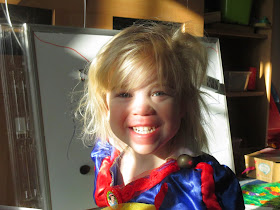As a stay-at-home mom, when I hear the word “call,” I
immediately think, “telemarketer.”
My husband recently subscribed us to a service which compares
every phone number that calls our house to a list of known scammers,
telemarketers, and con artists. If the number matches one on their list, the
service automatically answers the phone and then hangs up, which means that I
hear the phone ring just once, then disconnect. So I never even think about
answering a call until the second ring.
This service has been remarkably successful in getting rid
of people who are concerned that my computer has a virus, people who want to
let me know that I’ve won a free vacation, people who are excited that a
relative has left me a large amount of money, my dead grandmother who is
stranded in Mexico, and the occasional Nigerian prince. It is somewhat less
successful in screening out chimney cleaning services, ninety million
well-intentioned but annoying charities, and paid fundraisers.
Of course, in this day and age of caller ID and call
screening, even after that second ring I take a look at the phone screen and decide
whether I want to take the call or not. I receive several mail-order
prescriptions from the world’s most annoying pharmaceutical company (motto:
“We’ll Call You As Many Times As It Takes For You To Say, ‘Fine! Just Send Me
the Damn Meds!’.”), which means that every month, like clockwork, they call me
seventeen times in a row to remind me that I might need to refill one of my
prescriptions, although they’re never able to tell me which one. Silly me, I
thought that when I declined their automatic refill service, it meant that they
would let me decide when I needed more medications, but apparently it
actually means that they will call and hound me several times a day over the
course of several weeks until I call them back and refill my prescription, whether
I need to or not.
But I digress.
What I am trying to say is that receiving a call is not the
exciting feeling of personal worth and achievement that it used to be many
years ago. I no longer feel wanted or special just because my phone rings. A
call is no longer a flattering request for personal contact, it is not the
longing of a loved one to hear my voice; it is more likely a stranger out to
pick my pocket. And that is sad.
Thanks to modern technology, “personal” contact is more
likely to come in the form of an email or a text message. Which is convenient,
in a way, because I can finish what I’m doing before I read an email or a text,
instead of having to interrupt making dinner or brushing my teeth or trying to
put a child down for a nap to answer the immediacy of a ringing phone. But at
the same time, it lacks the personal connection of hearing a familiar voice. An
emoticon is no substitute for laughter, or a catch in the throat. There’s just
something special about getting a call.
Call.


























